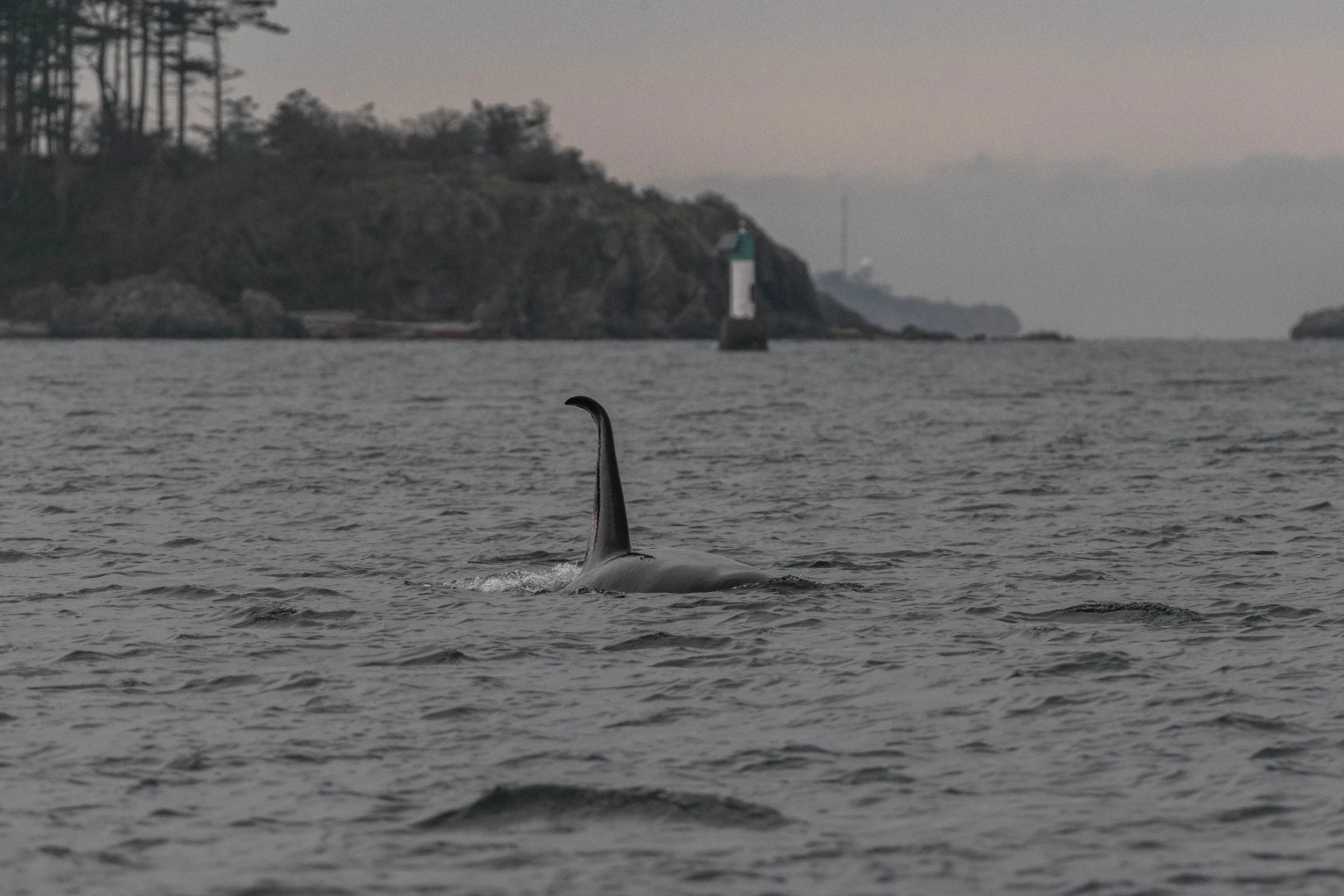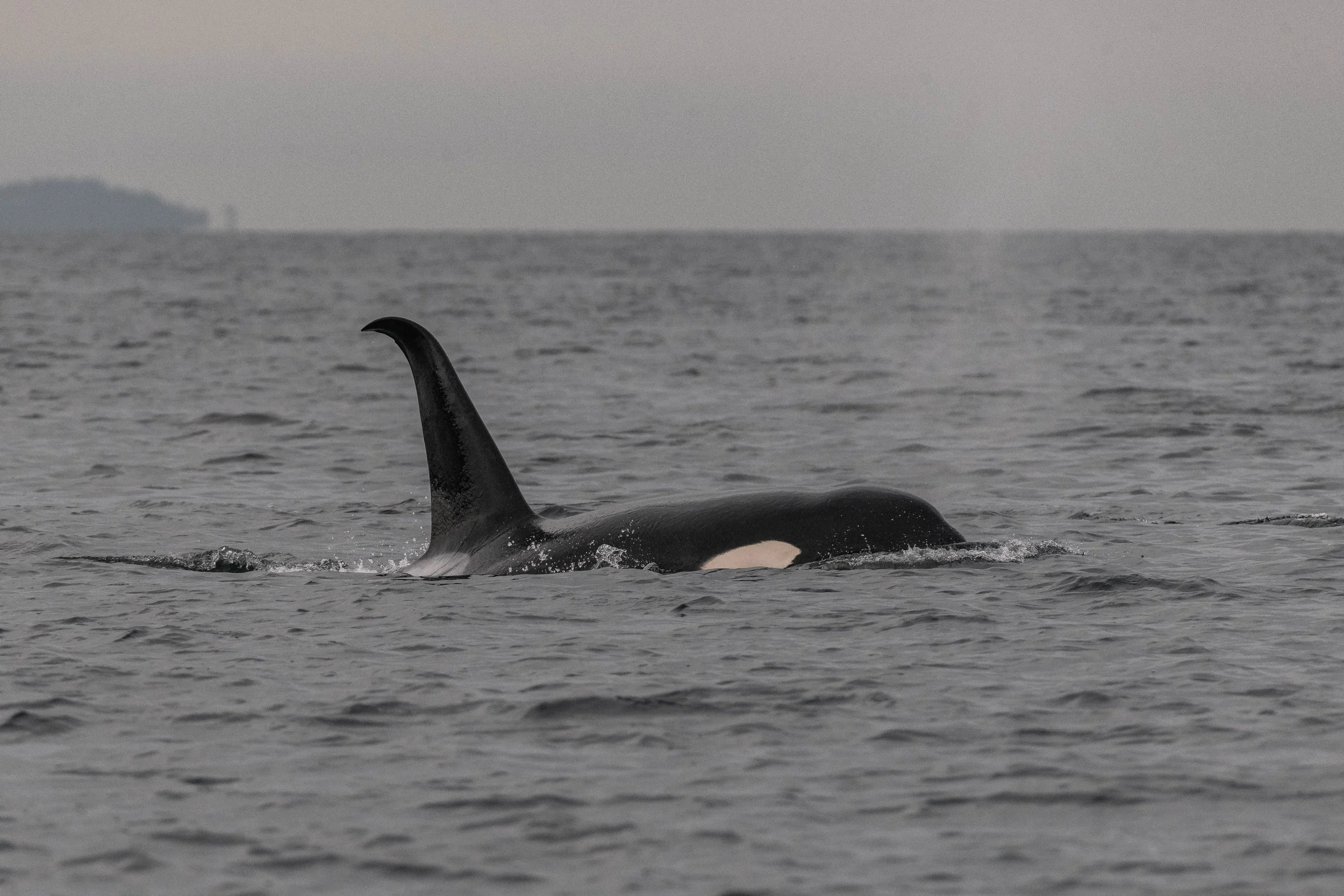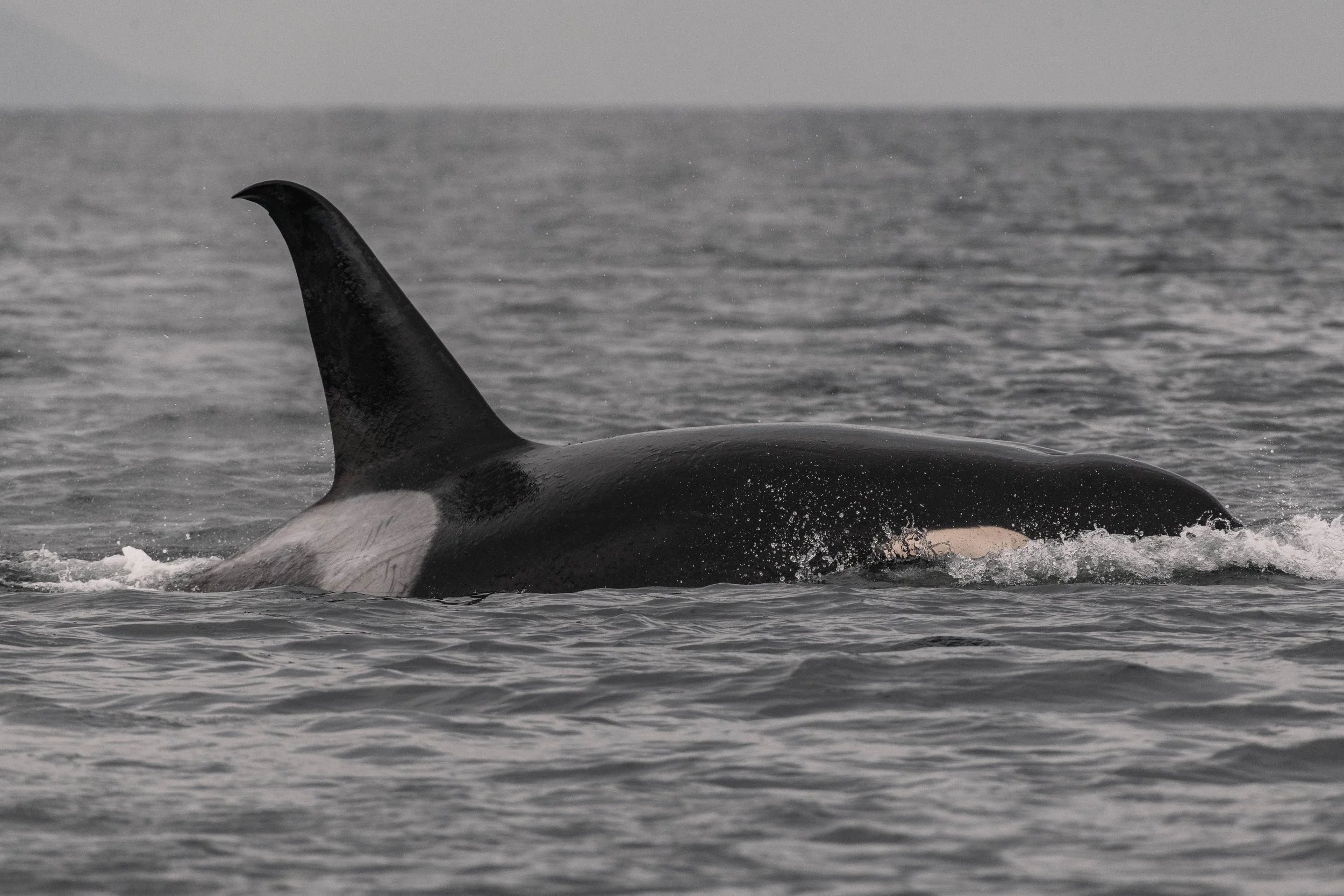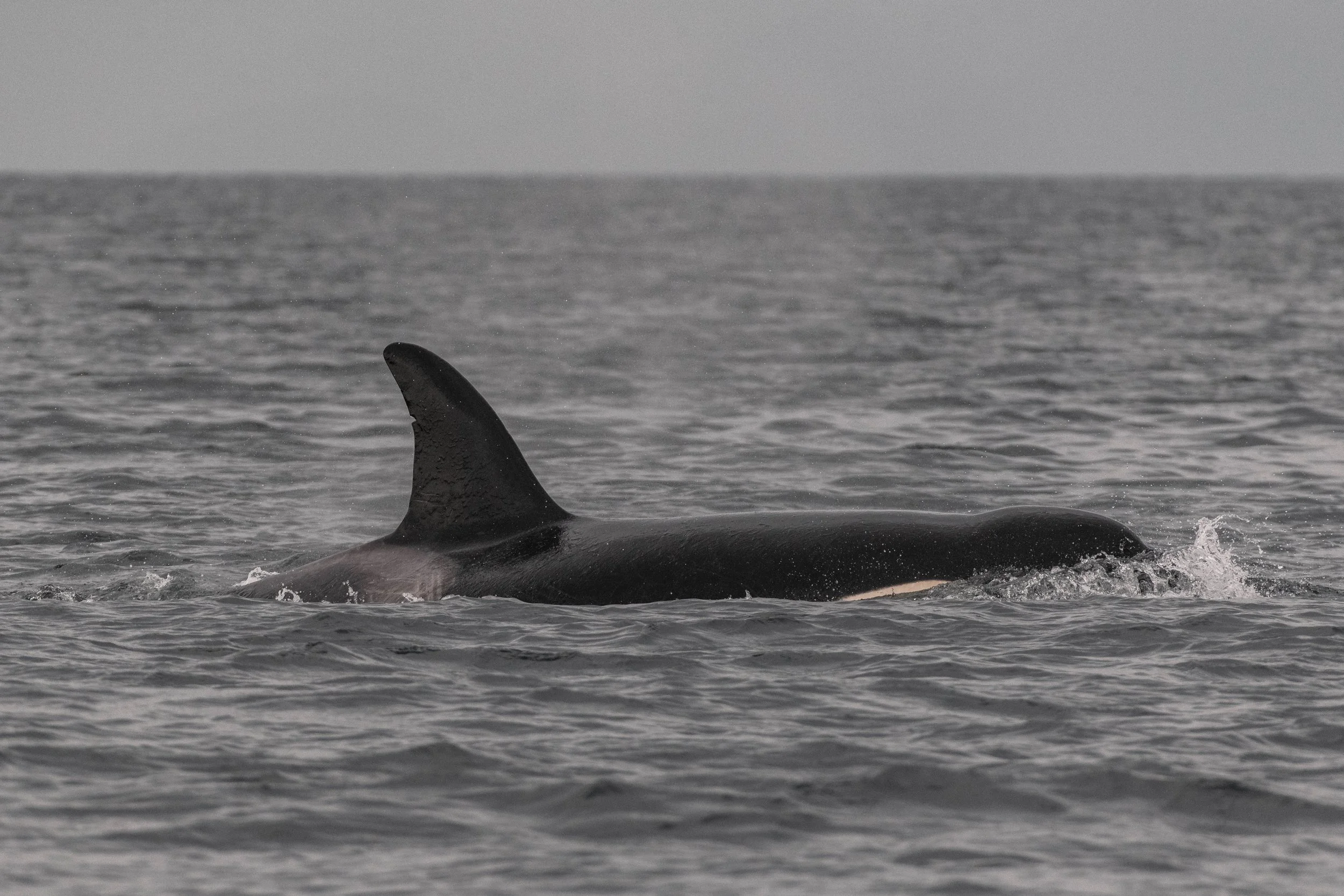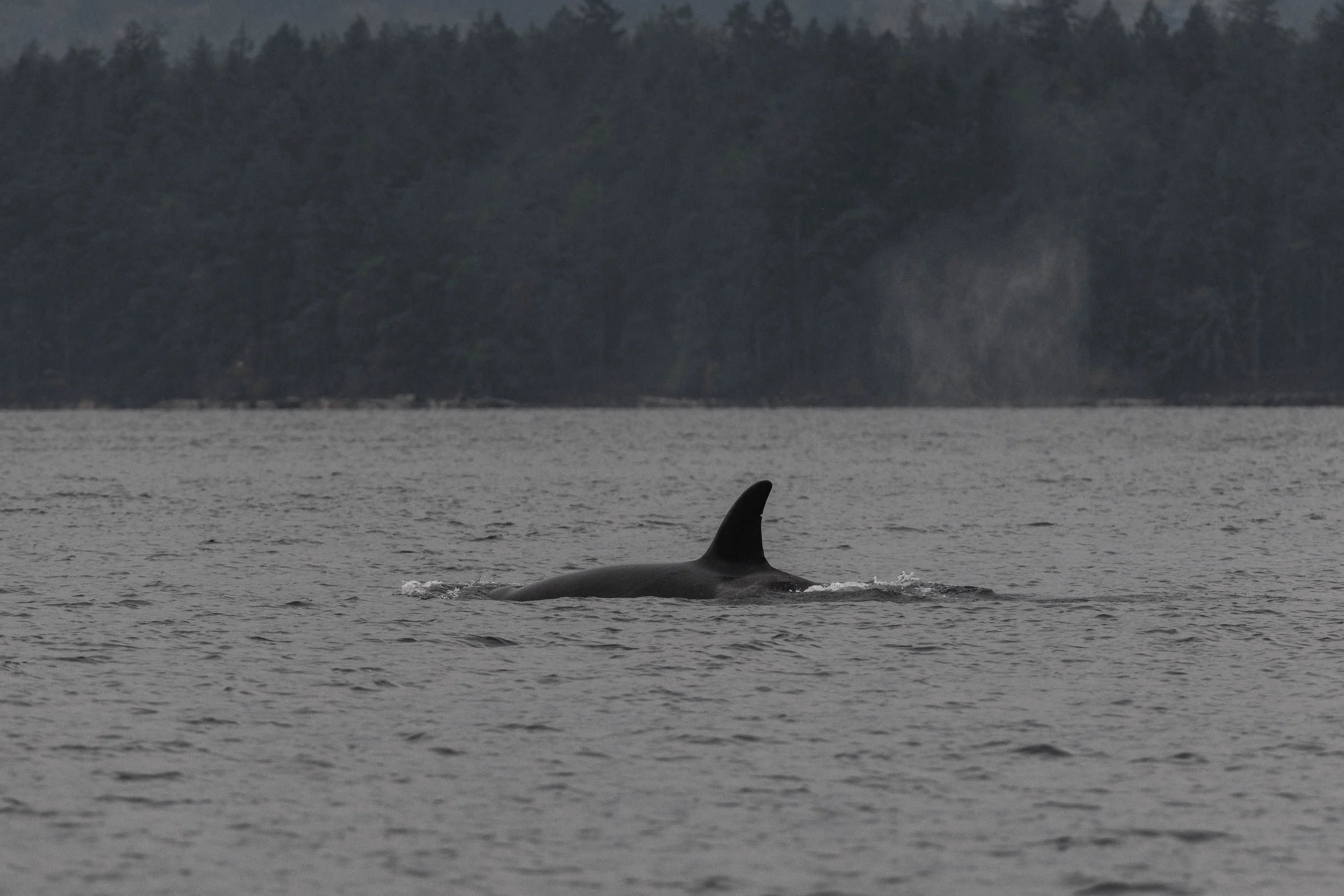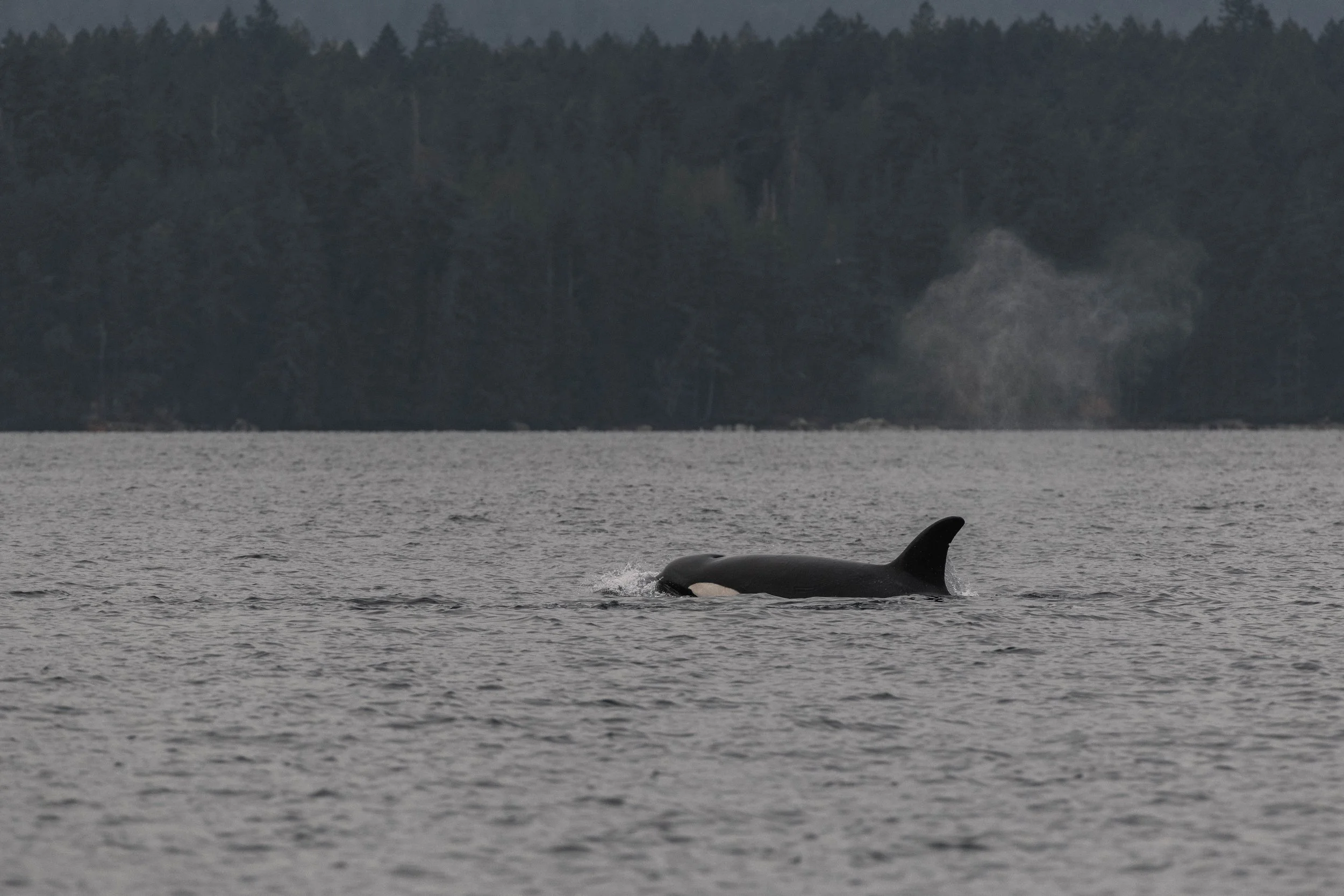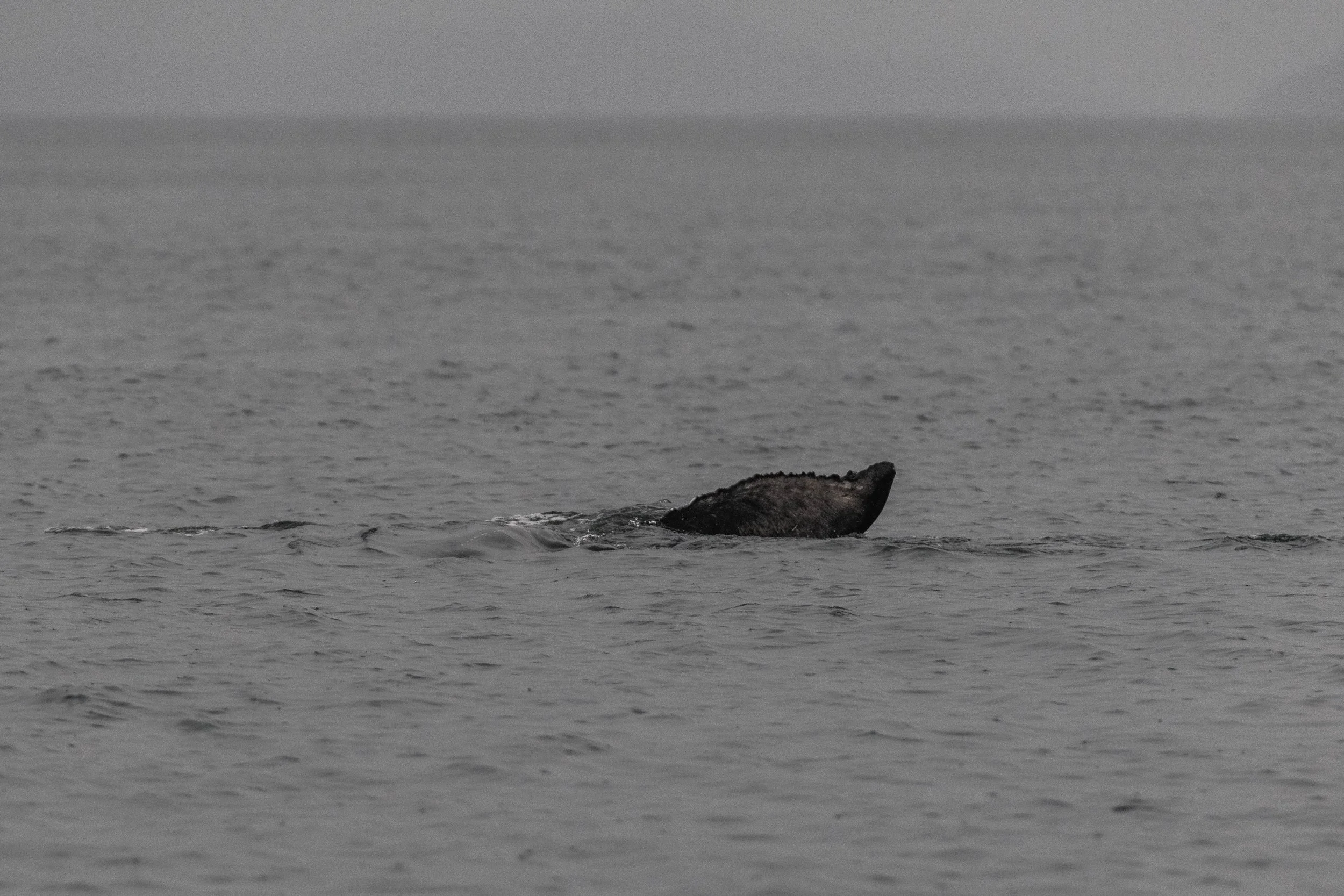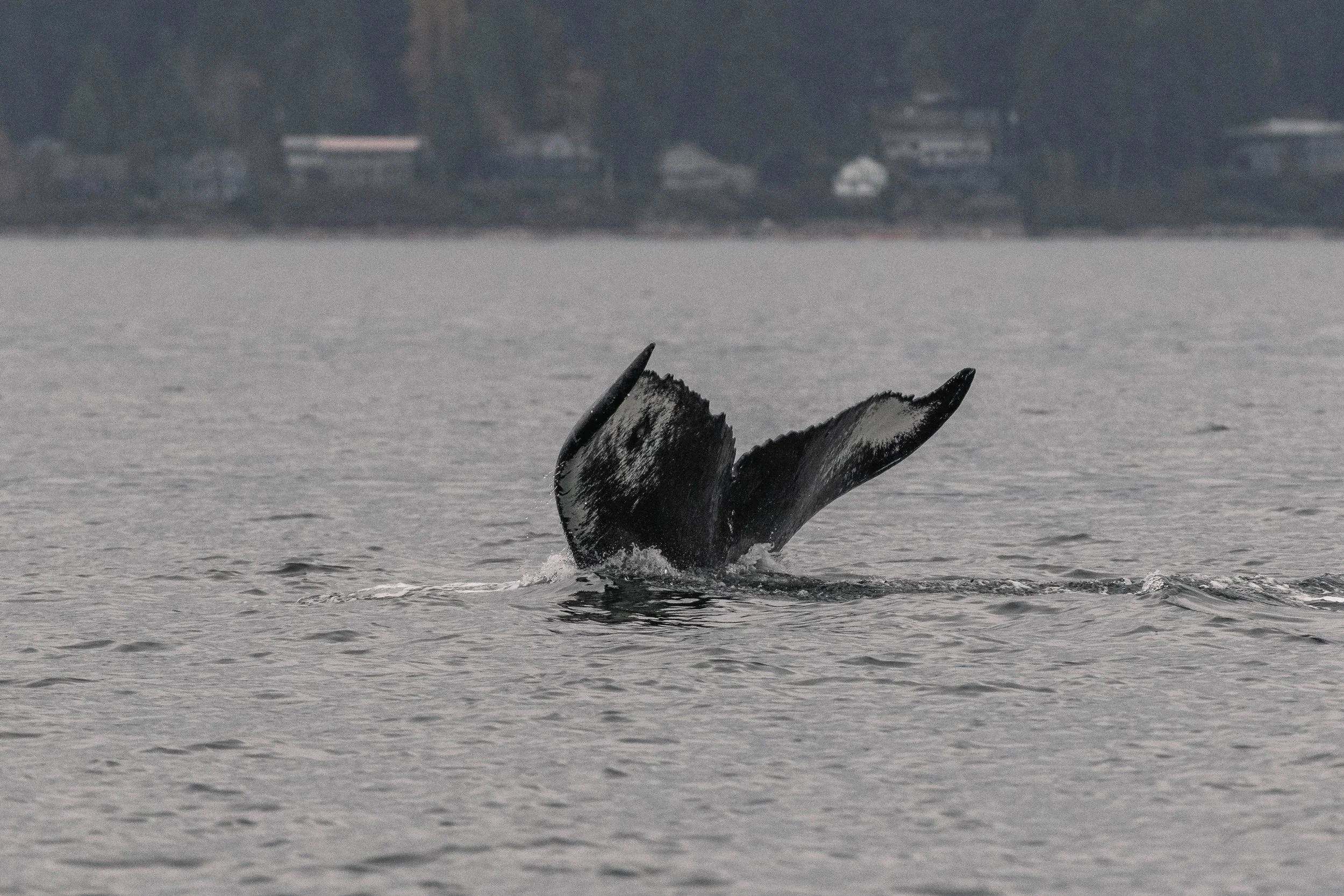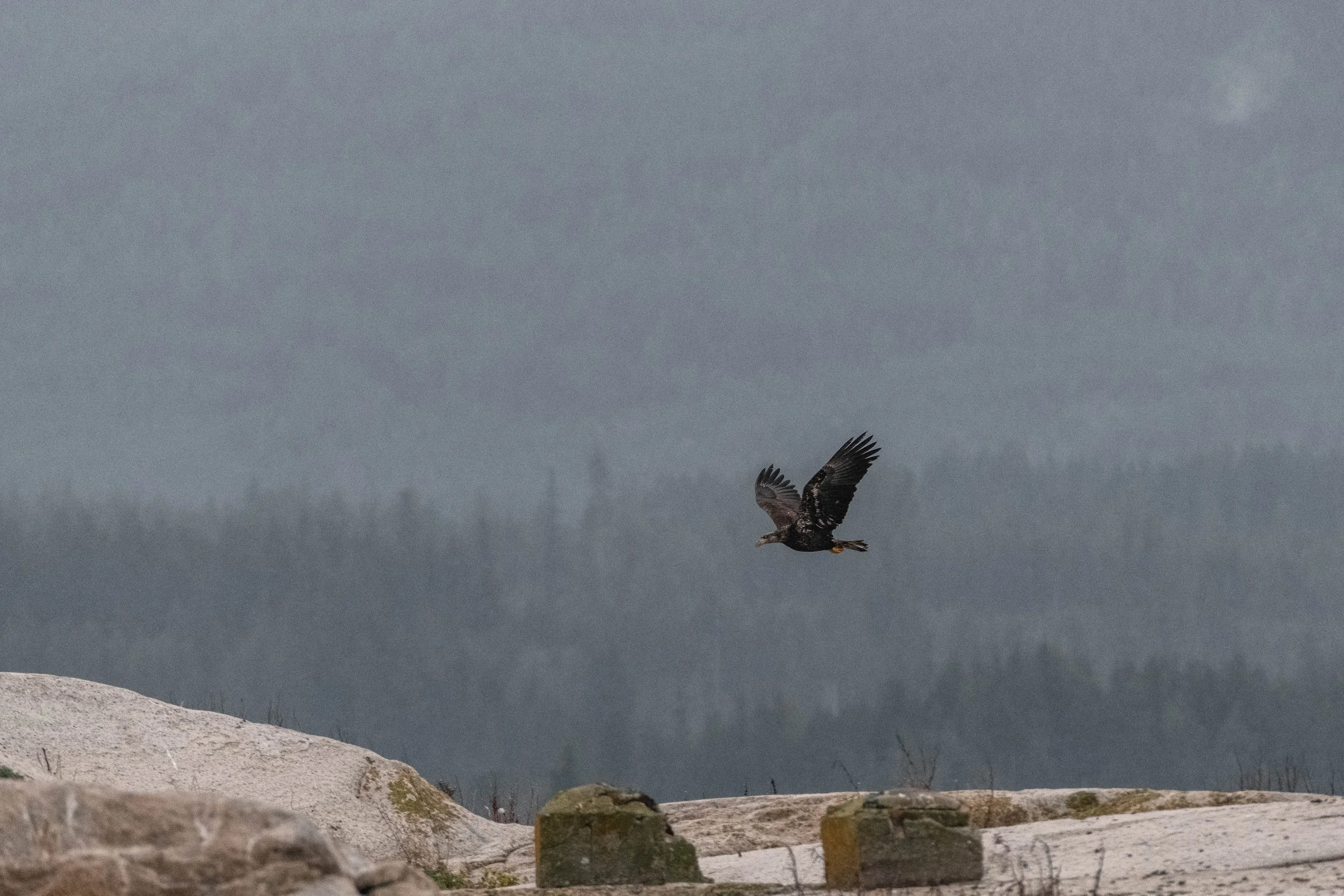November 12, 2025 - A Chaotic Orca Duo, plus Wolf Eel and her calf!
There are few orca in the Salish Sea more famous for their wacky antics than the two we were lucky enough to spot today! We headed out from Nanaimo and didn’t have to search for long before catching sight of the blows and distinctive dorsal fins of Indy and Jude, travelling together.
T065A5 Indy ♂ (2014)
T049A2 Jude ♂ (2007)
These two are fascinating whales, not just because of their playful behaviour, but also because of their unique relationship (or lack thereof) with their natal pods. Typically, male orca remain with their mothers for their entire lives, helping to support their siblings and the pod as a whole. But these two dispersed from their families quite early, striking out on their own and getting into all sorts of adventures.
Let’s start with Jude. Since leaving his pod in 2013 at the young age of seven, he’s been seen travelling on and off with other lone males, sometimes with his brother T049A1 Noah, uncle T049C Neilson, and even T051 Roswell. Roswell, estimated to be around 44 years old, was the eldest of Jude’s companions. You’d think his age would bring wisdom, but that wasn’t quite the case here!
During one of their travels together, Jude and Roswell somehow managed to get stuck in a lake. Yes, a lake! Lake Barnes, located on Prince of Wales Island in southern Alaska, is connected to the ocean by two narrow channels that are difficult to navigate without a very high tide. It’s believed the two orca chased prey into the area and became trapped there for over six weeks. A major rescue operation was eventually launched to encourage them back to the open ocean, an incredible story well-documented in an article by Orca Conservancy. Since that adventure, Jude hasn’t been seen with Roswell again; perhaps he learned his lesson about trusting his elders! Roswell is also an infrequently sighted individual, so it’s not surprising that we haven’t seen him again since their “lake vacation.”
Jude has also been spotted travelling with Indy’s older brother Amir, though their journeys tend to be less eventful. Indy, meanwhile, seems to enjoy the company of others, often turning up in “T-parties” (large gatherings of Transient Orcas) or rejoining his natal pod before setting out on his own again. He was even younger than Jude when he first dispersed: only five years old!
So why would these two young males leave their pods at all? There appears to be a connection between pod size and the likelihood of males dispersing. Both Indy’s and Jude’s natal pods are relatively large for Transient Orcas; the T049As have seven members when all are present, and the T065As have six. As pods grow, it becomes more difficult to remain stealthy, a key trait for these apex predators. To maintain hunting efficiency, older males may temporarily or permanently split off from the group. We see this behaviour in other males like Ooxjaa, Amir, and Noah, who occasionally leave their pods but are also regularly seen rejoining them. Jude and Indy, however, seem to have a slightly more independent streak!
While we admire their adventurous spirits, it’s always heartwarming to see these two finding companionship in each other’s company, even if only for a short time.
After spending some time with Jude and Indy, we continued into the Strait of Georgia toward the mainland coast. That’s where we encountered our next set of whales: a mother and calf humpback pair! They were resting quietly at first, then shifted into feeding behaviour: Wolf Eel (BCY0940) and her 2025 calf!
This sighting is especially exciting, as it marks the first time Wolf Eel has been recorded with a calf. She has been known to be female for some time, thanks to NOAA research, and is estimated to be around 12 years old, which is on the older side for a first-time mother, although timing varies between individuals. The youngest female recorded to return with a calf was just five years old, suggesting that humpbacks reach maturity around four years old, given their 11-month gestation period. It’s also possible Wolf Eel had previous calves that weren’t documented, but we hope this is her first successful one! Both she and her calf looked healthy and well-fed, building up their fat reserves in preparation for their southern migration to Hawaii.
Our final stop of the day was at the White Islets, where the action didn’t stop! We saw an abundance of wildlife, including Steller Sea Lions, Harbour Seals, and a variety of seabirds. The highlight, however, was a bit of drama among a group of Bald Eagles. One adult had caught a fish, but the younger eagles decided that wasn’t fair. They chased the adult through the air, forcing it to drop its hard-earned meal so that the youngsters could claim it for themselves! It was almost as entertaining as watching the massive sea lions jostling for space on the rocks.
It was the perfect end to a fantastic day on the Salish Sea. Please enjoy the photos captured by our onboard Marine Naturalist, Aly Kohlman, included below!
T049A2 Jude has a distinct hook to the top of his dorsal, evident here!
A great look at T049A2 Jude as he surfaces.
T049A2 Jude pushing his way through the water as they travel.
A great look at T065A5 Indy surfacing.
T065A5 Indy surfacing with a beautiful fall background.
T065A5 Indy is easy to ID thanks to the notch in the middle of his dorsal fin.
T049A2 Jude (back) surfacing beside T065A5 Indy (front).
The tip of Wolf Eel’s 2025 calf’s tail.
The unique scarring on Wolf Eel’s dorsal fin helps us ID her!
A beautiful fluke waterfall from Wolf Eel.
Wolf Eel (left) surfacing with her calf in tow (right).
The underside of Wolf Eel’s tail as she dives.
The Adult Bald Eagle sitting with their fish on the marker.
Steller Sea Lions on the rocks of White Islets.
One of the Juvenile Bald Eagles flying in.
Harlequin Ducks on the shore with some Black Turnstones.
Harbour Seals on the rocks, as well as floating in the water.
Can you spot the fish on the rocks?
One of the young eagles claiming the meal.
And flying off in success!

